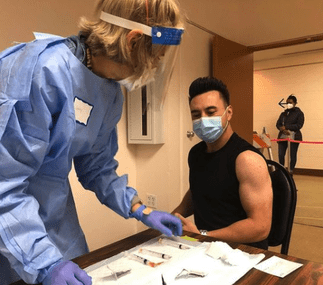 The following sectors are now eligible for vaccinations in Marin: education, food service, child care, agriculture & emergency services. Image courtesy Marin HHS.
The following sectors are now eligible for vaccinations in Marin: education, food service, child care, agriculture & emergency services. Image courtesy Marin HHS.
“We’re starting to see the light at the end of the tunnel both in terms of case rates and vaccine distribution rates,” Willis said.
Of course, given the hellacious rollercoaster ride Marin has been on for the past 12 months when it comes to COVID-19 metrics, Willis followed that sunny side up with the requisite caveats.
“But backsliding remains a real concern – this is definitely not a sign that we can get down our guard,” he said. “My concern is that people may forget that the virus is still very much active in parts of our community,” Willis said. “We want to remind people that testing is an important community prevention tool. Anyone feeling sick should seek testing.”
Regardless, the sustained run of good news has created a surge in optimism in Mill Valley and Marin, particularly with the news that Willis said on a webinar with Marin educators that “most of Marin’s 200,000 adults could be fully vaccinated by the end of June, and vaccinations for children under 17 could start in July,” the Marin Independent Journal reported.
Willis followed those remarks by telling supervisors that he expects that all school staff countywide to be vaccinated by the time spring break begins on April 3. Willis also used the occasion to tout the continued growth of vaccine distribution, with more than 93,000 doses having been distributed to date, including nearly 30,000 that have received their second dose, or 10 percent.
Wills said more than 82% of Marin residents age 75 or older have been vaccinated, with less than 4,000 residents within that age bracket yet to be vaccinated.
As he announced last week, Willis acknowledged the massive task ahead of vaccinating educators, food service and agricultural workers, child care providers and those in emergency services. That tier of essential workers is next up as part of the shift to statewide eligibility criteria. While all of those workers are now eligible, getting appointments, given the growing but continued limited vaccine supply compared to demand, might take a while.

